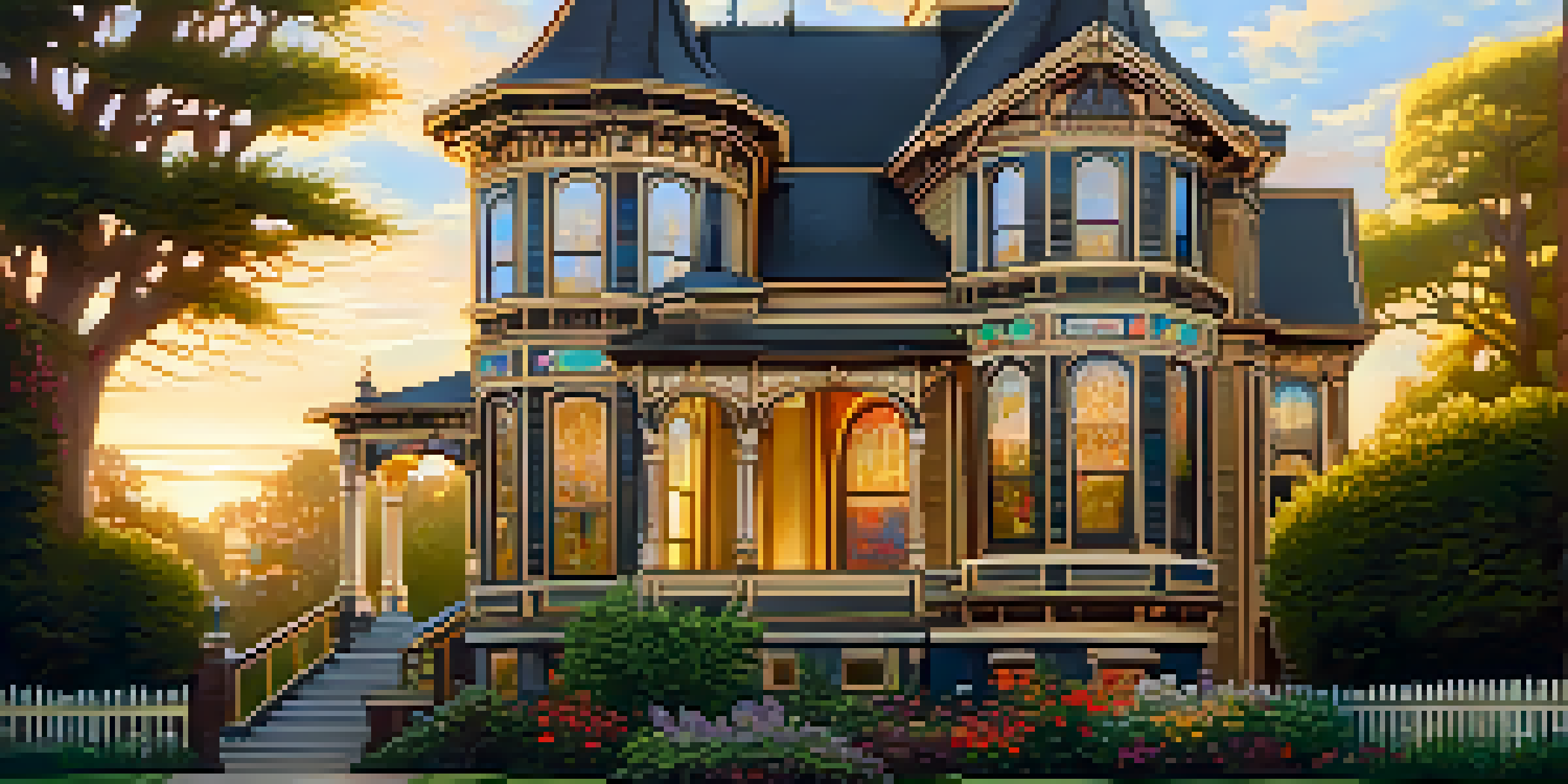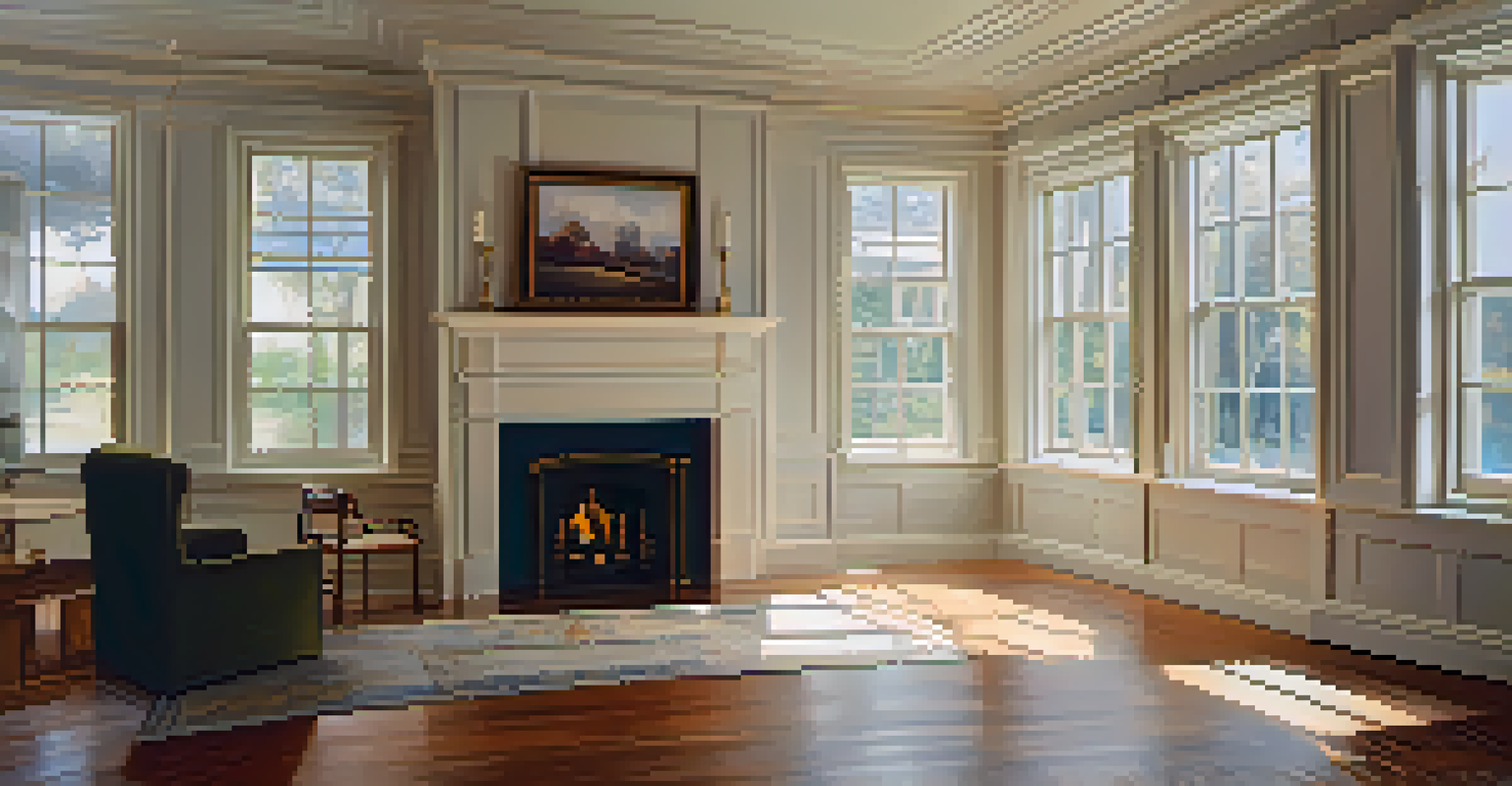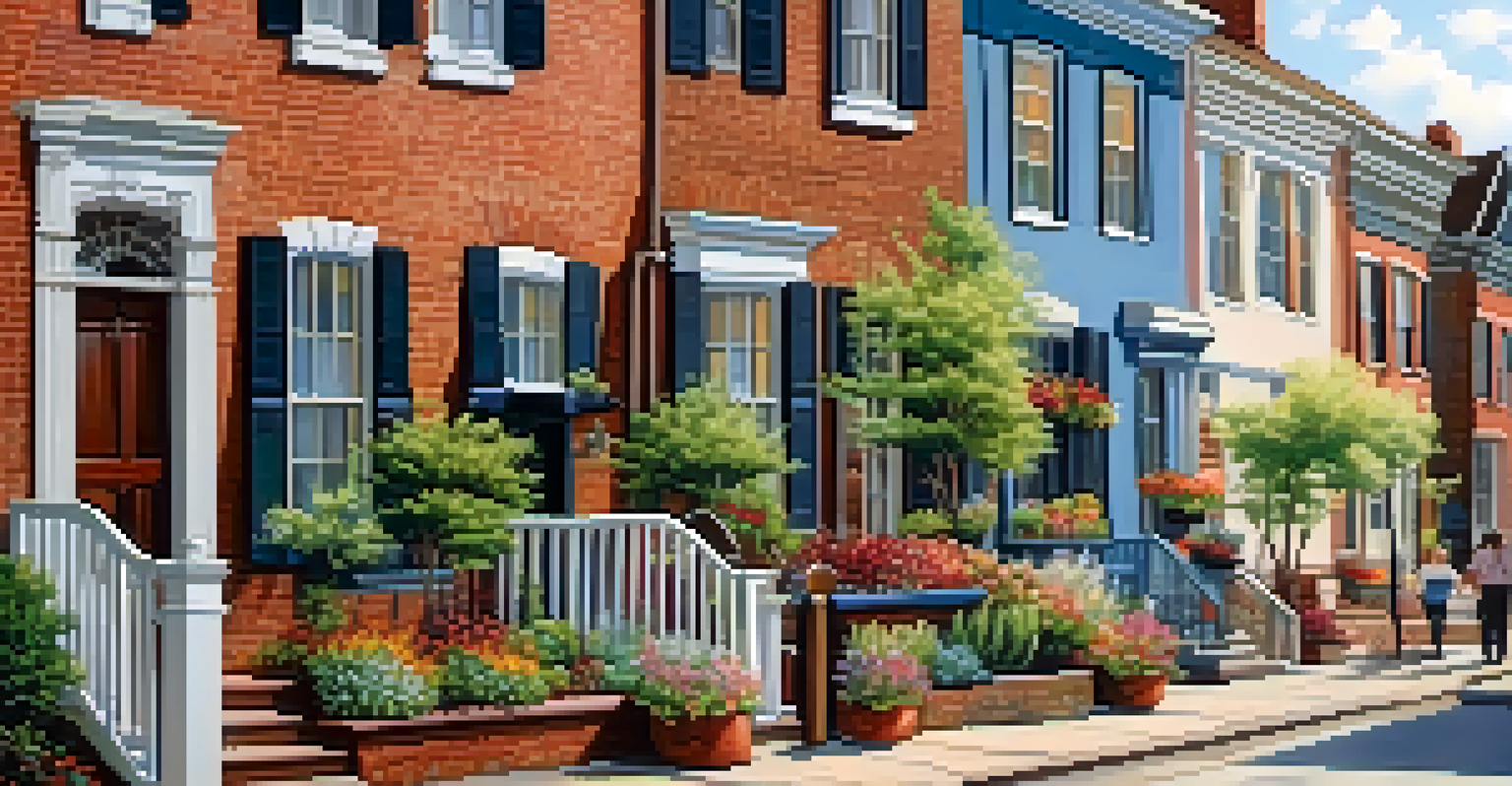Balancing Modern Amenities with Historic Home Preservation

Understanding the Importance of Historic Home Preservation
Historic home preservation is crucial as it maintains the cultural heritage and architectural beauty of our communities. These homes tell stories of the past and reflect the values of the times they were built in. By preserving them, we not only honor history but also contribute to the character of our neighborhoods.
Preservation of historic places is essential to our understanding of the past and our vision for the future.
Additionally, preserving historic homes can boost local economies by attracting tourism and encouraging community pride. When visitors come to see these beautiful structures, they often spend money in local shops and restaurants, benefiting everyone in the area. This economic impact is a compelling reason to consider preservation seriously.
However, as society evolves, so do the needs of homeowners. Balancing the preservation of these historic properties with the incorporation of modern amenities is key to ensuring they remain livable and functional for future generations.
Identifying Key Features to Preserve
When it comes to preserving a historic home, identifying key architectural features is essential. Elements like original moldings, windows, and doors often hold significant historical value and contribute to the home's unique character. By focusing on these aspects, homeowners can maintain the essence of the property while making necessary updates.

It's also important to research the home's history and style to understand what needs to be preserved. For example, a Victorian home may have intricate woodwork that should be kept intact, while a mid-century modern house might prioritize open spaces and clean lines. Knowing what defines your home will guide your preservation efforts.
Preserving Cultural Heritage Matters
Historic home preservation maintains cultural heritage and boosts local economies by attracting tourism.
Once these key features are identified, you can create a plan that balances preservation with the integration of modern conveniences, ensuring that the home remains both charming and functional.
Making Smart Renovation Choices
Smart renovations start with selecting materials and techniques that complement the home's original design. For instance, if you're updating windows, consider energy-efficient models that mimic the look of the originals. This way, you can enjoy modern benefits without sacrificing the home's historical integrity.
The past is not dead; it is not even past.
Additionally, working with skilled contractors who specialize in historic homes can make a significant difference. They understand the nuances of preserving character while implementing modern technology, ensuring that renovations enhance rather than detract from the property. Their expertise can help navigate local regulations regarding preservation.
Ultimately, making thoughtful renovation choices can lead to a harmonious blend of old and new, allowing homeowners to enjoy contemporary comforts without losing the charm of their historic homes.
Integrating Modern Amenities Thoughtfully
Integrating modern amenities into historic homes requires a delicate touch. Think about how technology can enhance daily living while respecting the home’s character. For example, adding smart home systems can provide convenience without being intrusive.
Moreover, consider the aesthetics of new installations. Choosing fixtures and finishes that align with the home’s historical period can create a seamless look. For instance, opting for vintage-style light fixtures can add modern functionality while maintaining the home’s traditional vibe.
Smart Renovations Enhance Homes
Thoughtful renovations using suitable materials can blend modern conveniences with the charm of historic properties.
By being intentional with your choices, you can create spaces that feel cohesive and inviting, making the home comfortable for both current and future residents.
Navigating Local Preservation Laws and Guidelines
Before embarking on any renovation, it’s vital to understand local preservation laws and guidelines. Many historic homes are part of designated districts that have specific rules regarding changes. Failing to comply could result in fines or forced restoration to original conditions.
Researching these regulations can empower you to make informed decisions about what is permissible. Local historical societies and preservation boards can be excellent resources for understanding these guidelines. They can also provide insights into best practices for renovations.
Being proactive about these regulations not only keeps you compliant but also helps you better appreciate the significance of your home within the community.
Emphasizing Sustainability in Renovations
Sustainability is becoming increasingly important in home renovations, even for historic properties. Using eco-friendly materials and energy-efficient systems can reduce environmental impact while enhancing the home’s functionality. For instance, installing solar panels discreetly can provide renewable energy without disrupting the aesthetics.
Incorporating sustainable practices can also align with preservation efforts. Restoring original elements, like flooring or windows, instead of replacing them is often more sustainable than new construction. This approach can reduce waste and conserve resources, making it a win-win for both the environment and the home’s history.
Sustainability in Renovations
Incorporating eco-friendly practices in renovations can honor the history of homes while being environmentally responsible.
Ultimately, prioritizing sustainability in your renovation plans can create a modern home that honors its past while being responsible for the future.
Celebrating the Blend of Old and New
One of the most rewarding aspects of balancing modern amenities with historic home preservation is witnessing the blend of old and new. This fusion can create a unique living space that is both functional and rich in character. When done thoughtfully, the home can serve as a canvas that tells a story of its past while accommodating contemporary lifestyles.
Hosting gatherings in a beautifully preserved home can prompt conversations about history and design, fostering a deeper appreciation for both. Friends and family can enjoy the comforts of modern living while surrounded by the charm of yesteryear, creating memorable experiences.

Ultimately, this celebration of the blend can inspire others to consider preservation and innovation in their own homes, fostering a greater sense of community and connection to the past.